- Home
- Stephen Hunter
I, Sniper: A Bob Lee Swagger Novel Page 2
I, Sniper: A Bob Lee Swagger Novel Read online
Page 2
Was Mitch Greene funny because he looked funny, or did he look funny because he was funny? Good question, no answer, not even after all these years. He had one of those big faces—big eyes, big nose, big jaw, big bones all the way around, big ears, big Adam’s apple—all of it set off by a big frizz of reddish-gold-turning-to-gray hair, a kind of Chia Pet gone berserk. When he smiled, he had big teeth and a big tongue.
“Anyhow, boys and girls,” he said, “and that includes all you grandpas and grandmas, because if you haven’t checked lately, you still are divided into boys and girls, not that it matters at our—oops, I mean, your age—this psycho thing we have going on now, with some berserk redneck dressed in camouflage and a ‘Bring Back Bush’ bumper sticker on his pickup, is a reminder of one thing: you may want to ignore history, but unfortunately history will not ignore you. Who said that originally? Ten points and I’ll only charge you ten bucks for an autograph.”
“Trotsky,” came the call.
“Give the man a joint,” said Mitch. “Anyhow, to be serious for just a second, we have a nutcase killer playing sniper wannabe shooting down some of my cohorts who gave it up to stop the war in Vietnam all those years ago. You little peasants weren’t even born then, that’s how long ago it was. Anyhow, these folks really gave it up for peace and to bring our boys—your dads—home in one piece. Since you’re all here, you can see it worked. Now some guy is playing get even with the commies, because that’s the way his mind works. No good deed goes unpunished, just like the man says. But history, guys and gals, it could kill you. And until it does, you may as well have a laugh or two at history’s expense, which is why I worked for at least seven, no, maybe as many as eleven days on the book, which gives you a sense of where it started: with the wretched excesses of capital, of men with so much money they couldn’t spend it, and after the fifth mansion, housing lost its charm, so they—”
The bullet hit him in the mouth. It actually flew between his two big sets of choppers and plowed through the rear of the throat to the spine, which it all but vaporized into thin pink mist on the exit. His head did not explode like Jack’s and Mitzi’s, as the cranio-ocular vault had not been compromised with an injection of velocity, energy, and hydraulic pressure. The bullet flew on through and hit a wall. But with the bisection of Mitch’s spine, animal death was instantaneous, though Mitch’s knees hadn’t got the message and they fought to keep him upright, even fought through the collapse of all that weight, so instead of tumbling he sat down and happened to find his chair with a thud, almost as if he’d finally gotten sick of hearing his own voice. No one got it. Attention was also claimed by an oddity of sound—the nearly unspellable sound of something shearing through glass, a kind of grindy, high-pitched scronk that announced that a gossamer of fracture, like a spider’s delicate web, had suddenly been flung across the large front window a hundred feet beyond Mitch at his lectern, and that at its asymmetrical center a small, round, actual hole had been drilled in the glass, which, though grievously damaged, held. As no loud report was registered, no thought of “gun” or “bullet” occurred to anyone for at least three full seconds, just the weird confluence of the bizarre: Mitch sitting down, shutting up, the window going all smeary. Hmm, what could this mean? But then Mitch’s head, still intact, lolled forward and his mouth and nose began to issue blood vomitus in nauseating amounts.
That’s when the jumping, screaming, shouting, hopping, and cell phone photoing began, and soon enough the police-FBI Fellini movie would begin its new run in Cleveland.
2
Politics, everything’s politics. Even murder. There would be a tussle with Chicago PD upcoming; they’d want the glory, and in any case, under normal circumstances, murder was for a local jurisdiction and the FBI held no sway over it. But the FBI would win out as lead agency on the investigation, because of a statute holding that murder for hire when initiated over state lines was in the federal bailiwick. The utter professionalism of the shooting made the murder-for-hire inference inescapable, and thus the Bureau got the prize.
Nick Memphis was still the hot boy in the Bureau because of his triumph a year earlier in an ambitious, violent bank robbery in Bristol, Tennessee, which he’d tracked, penetrated, and taken apart with minimal loss to civilians. He was hovering on the edge of an assistant directorship. So though others lobbied intensively, it did no good and Nick got the agent-in-charge gig for “Task Force Sniper,” once it was declared a major case, Bureau code for “Everybody is watching this one.” Given the high publicity value of the investigation, the hugeness and brightness of the limelight, the grounds for endless speculation and fascination, it might get him the assistant directorship if he wrapped it up fast. He tried not to think of that. That had never been the point. The point had always been to use his talents, his work ethic, his intelligence, his courage to do some good in the world, make it a better place. So he tried to deny how fucking much he wanted that assistant directorship.
His first morning after getting the assignment—it happened the day Jack and Mitzi were taken down and the “pattern” emerged—he spent establishing liaison first with field offices in Chicago and New York (who of course resented suddenly having to report to a DC big shot, even if he was well-known and liked by reputation) and through them with the responding police departments. Since East Hampton’s was small, the Long Islanders were happy to turn administrative control over to the feds, whom they despised less than the New York State Police; that was no problem. Chicago was bitter, but in a little time—Nick’s diplomatic rep was well-known and amply justified—he’d gotten Chicago aboard and set up a working HQ in the Chicago Police Department (as opposed to the FBI’s field office, which ticked off the field office AIC, but that couldn’t be helped) and got down to the bolts and nuts. Evidence recovery teams were dispatched immediately to both localities, some of the Bureau’s best forensic people taken off less urgent cases and reassigned here, firearms specialists invited over from BATF just to contribute what they could to the FBI’s efforts, special agents moved in to monitor the local performance and offer gentle evaluations of what could be done better, what needed to be done over, and what was superb work. By 4 p.m., the feds had all but usurped the Chicagoans in the investigation.
But Nick had a first move to make before he even went to Chicago to take command. Just from press reports, he understood, as a onetime sniper himself, that the shooting was of very high quality, something rarely found in criminal cases. Neither his people in East Hampton nor those in Chicago could confirm exactly where the shots had come from, but the lack of rifle reports noted at each scene suggested they had come from a long way off or that the shooter had used some kind of suppressive device, and that conclusion buttressed the operating assumption: a pro. A bullet recovered from the elbow of Joan Flanders’s personal assistant—it had passed through Joan, hit her PA in the fleshy part of the shoulder and struck bone, though without energy to break bone, and literally bounced off the hard stuff and rolled down the outer part of his arm, doing surprisingly little damage—proved to be, if mangled so that it appeared to resemble an especially lovely mushroom, the famous 168-grain boat tail hollow point unanimously used in its Federal or Black Hills loading by most SWAT sniper teams as well as nearly all Army, Marine Corps, Air Force, and Navy dedicated marksmen, combat or otherwise. It was the magic bean that terminated the lives of three Somali pirates in April ’09 in one well-coordinated moment. So Nick had his own DC investigators and through them via e-mail their reps in all fifty states begin the hardest, dullest part of the hunt: the canvass.
All military units with sniper deployment had to be reached; the same was true of all law enforcement units with precision shooters as part of the team. Then there were all cadres and students, recent and otherwise, of the many sniper schools, not merely professional, such as the Marine Sniper School at Quantico, but also the literally dozens of private schools, because as of late sniping had taken on a kind of glamorous aura and many citizens wanted traini
ng in the art. But beyond sniper culture lay the broader shooting culture itself, and this generally involved the many dedicated high-power shooting teams affiliated with gun clubs and administered at some level by the NRA, which ran the national matches at Camp Perry, Ohio, every late summer. There were firearms schools that taught hunting techniques too, and there was a niche in the hunting community built around men who became proficient at taking out game animals at long range. There were varmint hunters, who also shot at long range and were truly superb shots, capable of, after much refining of their instruments and much investment in range and loading bench time, hitting twelve-inch-tall prairie dogs at ranges of over a thousand yards with regularity. There was a bench rest culture, in which men, again with highly customized rigs, shot for group size at over a thousand yards (the current thousand-yard champ had been able to put ten rounds into 4.5 inches from that distance). All had to be surveyed and the same questions answered.
Is someone messed up? Is someone bitter, irrational, nearly out of control? Is someone angry? Does someone talk a lot about how the lefties lost the war in Vietnam? Has someone’s health declined suddenly? Is someone on drugs? Did a marriage break up, a child die, a job disappear? Has someone vanished? Is someone pissed off about something that happened in Iraq? Was there a flutter, a tremble, a twitch, a glitch, an anomaly in the community? The task was huge; there were a lot of people who could shoot well at long range in America, and it seemed for a while as if the investigators would have to shake out all of them.
Meanwhile, in the media, the immediate suspicion fell on him, as in the Great American Gun Nut.
That was the narrative, from the start. You know the guy; we all do. Something a little “weird” about him, no? Makes his office buddies a little uneasy, the women especially, with his dullness on all subjects save firearms, about which he lights up like a Christmas tree. Can be seen hunched at the keyboard not with secret Japanese teen nudes but with rifles on his screen. Goes a little nuts when the Second Amendment comes up, and in time people learn to stay away from the topic when he’s around. Maybe he’s got a house full of heads or a shelf full of trophies with small gold men holding weapons atop them. Ew, creepy. Maybe he knows the difference between .30-06 and .308 or that a “thirty caliber” can be a .30-06, a .308, a .300 Win Mag, a .300 Remington Ultra Mag, a .307, a 7.62X39, X51, X54, and so on. Maybe he spends time in the basement with his little mechanical devices and like some dark alchemist of medieval times is capable of fabricating his own cartridges. Maybe he’s an amateur gunsmith who’s got an eerie engagement with the clever mechanics that underlie the mesh of pins, levers, springs, valves, and tubes that constitute the interior of all firearms. All these things suddenly became suspect, and at a certain point, the reporters even started going through the Internet and calling gun stores for hints on recent bizarre behavior by otherwise nondescript customers.
It was the third death, poor Mitch Greene in midsentence, that narrowed the field. Anyone could have killed Joan Flanders, for she was hated as much as she was loved; hatred of her was too broad-based to be of any help at all. And anyone could have killed Jack Strong and Mitzi Reilly, for they were hated, perhaps even more passionately, by just as many, for their smugness, moral superiority, fancy education, contempt for authority, unconvincing contrition, reentry into society, low-watt fame, and so forth and so on. The fact that both Joan and the Jack-Mitzi crimes could be connected to the Vietnam War and the rages of the sixties was tantalizing but of itself not revelatory, not yet anyway.
But nobody really hated Mitch Greene, then or now. He was a clown, a comedian, a cornball; he made people laugh. He probably had never met the other three, for he was really several tiers below them in radical chic circles. He had more or less gone mainstream; he was the one-man answer to the question “Which one of these doesn’t belong?”
He only belonged, if barely, by virtue of the Vietnam connection. Like the other three, he was famous in those years and got a lot of TV time. But was he a real radical, like the others, or was he just a guy riding history’s currents as a way to a gig, getting laid, and doing a little self-expression at the same time? In fact, he’d never really done much for the movement except exploit it for his own ends. There were others, many others, who’d done a lot more, who could be held accountable for a lot more, if those were your politics and “punishment” or “vengeance” were your motive.
“He’s a lightweight,” said Ron Fields, Nick’s number two, an institutionally famous Tommy Tactical type who’d won five gunfights but was known not for brains so much as loyalty and guts. “The only reason for whacking him would be unsophisticated. To a certain type of person upset with the Movement, he would be one of them, maybe even a face, although in reality he was never one of the key apparatchiks. He needed too much attention to do the hard work of revolution.”
“Is that anything?” Nick asked. “Does it tell us anything? Are we learning anything?” He looked around the table, his staff of three or four stars like Ron who’d hitched themselves to him, hoping he’d rise, a New York State Police detective, repping the Hampton sector of the investigation, two smart guys each from Chicago and Shaker Heights, except one of the smart guys in each team was a smart girl. The group was clustered in a large, dreary room in the upper reaches of the Shaker Heights Police Station on the day after Mitch’s death, sitting at a Formica table littered with dead cups of joe, half-eaten doughnuts, sugar grains everywhere, all of it rotting under the nurtureless light of an overhead fluorescent.
One of the women now said, “Here’s what I’m getting: He’s gifted technically but politically naive; he hasn’t done his homework, he’s just gone after the simplest, most obvious symbols of the Movement forty years ago, as he would know it or as he remembered it.”
“So he’s an old guy?” Nick asked.
“I think he has to be.”
“I don’t know,” Nick said. “Shooting at that level is a young guy’s game. Muscle, stamina, discipline, all young guy stuff. Then there’s the moving around. He’s probably not flying, not with the rifle, and all the localities are within driving distance of the time differential. Lots of driving, lots of movement—again, that’s all young guy stuff.”
“Maybe he’s a real good old guy,” someone said. “I mean really good.”
“Anybody know a really good old guy?”
Silence.
“Well, I do. The best. ’Nam sniper, operator, gunman. He’d be the logical candidate.”
“Do you want us on it, Nick?”
“I already called him. First day, by landline, in Idaho, verifying for my own ears he was not in play but out on his ranch caring for his horses. He was. There was a one-in-a-jillion chance he snapped. It happens. He knew why I was calling. He was pissed. But I wanted a clear head to run this show, and that’s what I got. So does anybody know of any other really good old guys?”
“We don’t,” Ron said, “but tomorrow a.m. I’ll have people looking at Vietnam medal-winners, guys who killed a lot. Snipers, maybe aces, specialists.”
“That’s good,” said Nick. “That’ll give us a place to start winnowing. All right, what I’m seeing is someone paying ‘them’ back for their treason. To feel that all these years later, he had to be there all those years before. Kids today don’t care much about Vietnam; most of them don’t even know what it was. But whoever he is has borne a grudge for a long time. And now, maybe realizing that he himself has limited time left, he’s decided to get the rifle out of mothballs, put on his camos, and go off into the boonies on one last stalk and kill.”
“Makes sense,” said one of the others and politely no one bothered to point out that this interpretation violated the premise by which the Bureau would run the investigation. That was because all of them were now attached to it, and all of them would prosper if it prospered.
“All right,” said Nick, “then as Ron says, let’s find our best people and jump-start this thing by testing the theory. Let’s eliminate the
large category of possibles for what we think is a smaller category of probables. I’m thinking former Vietnam snipers. Marines, Army, maybe CIA; they had a lot of paramilitary operators over there. I think it was called SOG, their little commando unit. Did the Air Force have snipers?”
“They would have had air policemen sniper-trained for perimeter security. Also, the Navy always has a designated marksman shipboard for mine disposal. Guy hits ’em at long range, makes ’em go boom. Those are two off-the-wall possibilities. I don’t think the SEALS had a sniper program that early. They were more Delta cowboy gunfighters than precision takedown specialists.” That was Ron, always good on sniper stuff and hoping to become head of Precision Marksmanship, the FBI sniper training unit, at Quantico.
“I’m sure by noon tomorrow everyone on this investigation will be an expert on the arcana of military sniping, circa 1965 to ’75. Get ’em going. Stay with ’em. I’ll be going to the autopsy tomorrow and I’m waiting to hear from forensics on the Greene bullet. I’m sure it’ll be another 168.”
Thus it was that the FBI, very early in the investigation, became aware of Carl Hitchcock.
Carl’s name actually arose almost simultaneously from two sources. The first was the sergeant in charge of training and special operations for the North Carolina State Police, their SWAT guy, in other words. He’d been reached at home by a young special agent in the major case working room of Task Force Sniper in the headquarters building in Washington. She was making inquiries on the subject of good law enforcement shots who’d recently displayed instability. The sergeant abjured knowledge of such, and the phone call was brusque, abrupt, and professional, and almost short. But—

 Point of Impact
Point of Impact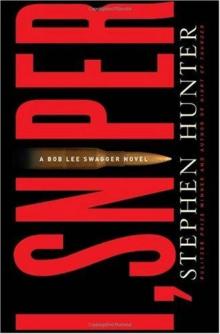 I, Sniper
I, Sniper Havana
Havana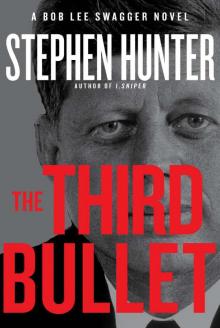 The Third Bullet
The Third Bullet Sniper's Honor: A Bob Lee Swagger Novel
Sniper's Honor: A Bob Lee Swagger Novel Dirty White Boys
Dirty White Boys The 47th Samurai
The 47th Samurai Hot Springs
Hot Springs G-Man
G-Man Black Light
Black Light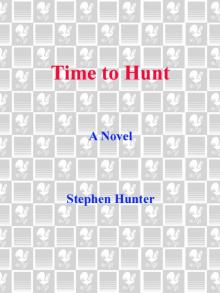 Time to Hunt
Time to Hunt The Day Before Midnight
The Day Before Midnight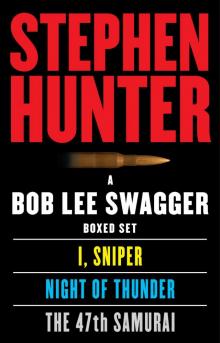 A Bob Lee Swagger Boxed Set
A Bob Lee Swagger Boxed Set The Master Sniper
The Master Sniper Game of Snipers
Game of Snipers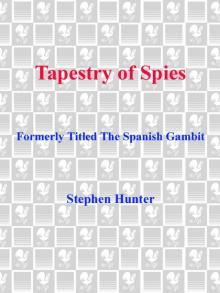 Tapestry of Spies
Tapestry of Spies Citadel
Citadel The Second Saladin
The Second Saladin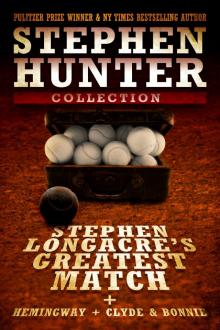 Stephen Longacre's Greatest Match
Stephen Longacre's Greatest Match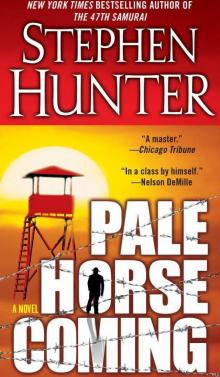 Pale Horse Coming
Pale Horse Coming Soft Target
Soft Target Dead Zero
Dead Zero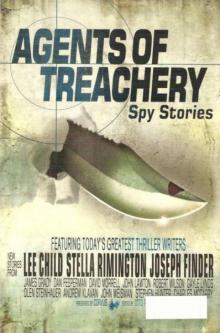 Casey at the Bat
Casey at the Bat The Third Bullet bls-8
The Third Bullet bls-8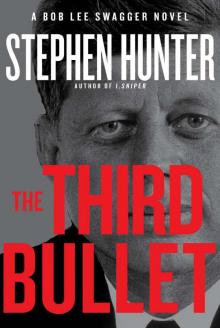 The Third Bullet: A Bob Lee Swagger Novel
The Third Bullet: A Bob Lee Swagger Novel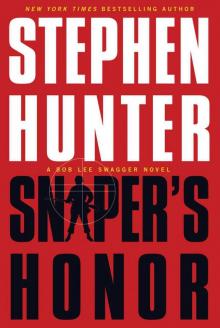 Sniper's Honor
Sniper's Honor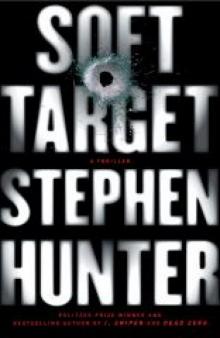 Soft target rc-1
Soft target rc-1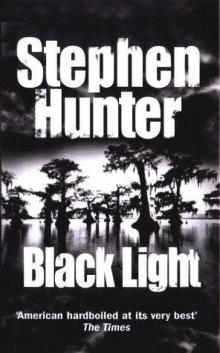 Black Light bls-2
Black Light bls-2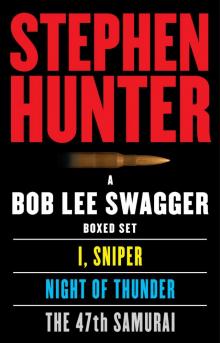 A Bob Lee Swagger eBook Boxed Set: I, Sniper, Night of Thunder, 47th Samurai
A Bob Lee Swagger eBook Boxed Set: I, Sniper, Night of Thunder, 47th Samurai Havana es-3
Havana es-3 Hot Springs (Earl Swagger)
Hot Springs (Earl Swagger)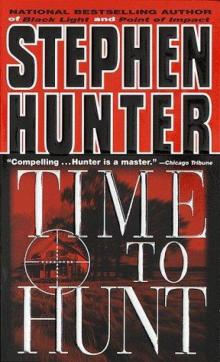 Time to Hunt bls-1
Time to Hunt bls-1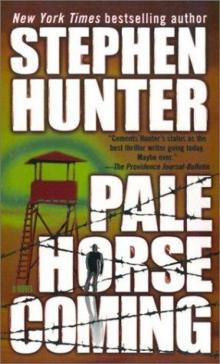 Pale Horse Coming es-2
Pale Horse Coming es-2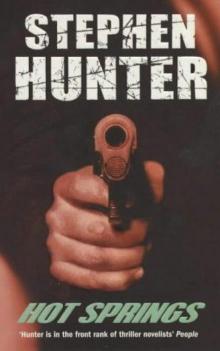 Hot Springs es-1
Hot Springs es-1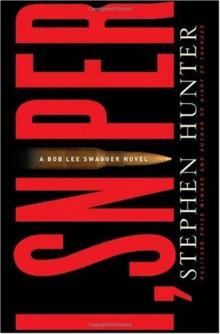 I, Sniper: A Bob Lee Swagger Novel
I, Sniper: A Bob Lee Swagger Novel